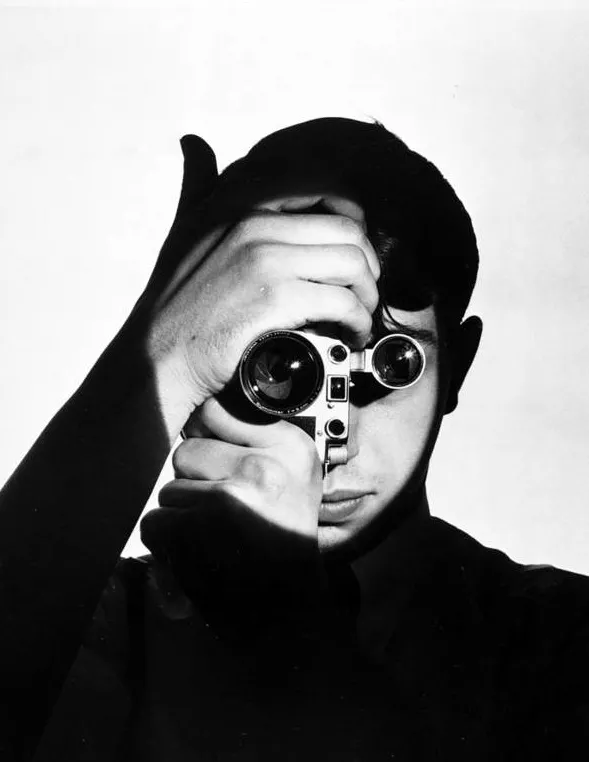
Andreas Feininger: The photojournalist (Dennis Stock), 1951/2022,
Licensed print with white border around the image: Size image: 47 x 61 cm, overall: 52 x 66 cm. Premium Luster Photo Paper 250 g/m. Price € 195,- incl. VAT plus shipping. Order here!
Andreas Feininger is considered one of the most influential photographers of the 20th century. Born in Paris in 1906 as the eldest son of the famous painter Lyonel Feininger, he belongs to a generation of artists who discovered photography as an artistic medium for themselves in the period after the First World War and developed a new photographic way of seeing. Clarity, simplicity and organization are the basic principles of his work. Like hardly anyone else, he understands how to link image content with strict formal criteria such as perspective and composition.
The architecture and life of his adopted city of New York have fascinated him over the decades. Again and again he captured the Manhattan skyline, the street canyons, the skyscrapers, the bridges, and the elevated trains in atmospherically dense images. Today, his views of the metropolis rank among the classics of photographic history. The exhibition at the Bröhan Museum features over 90 black-and-white photographs.
There are very few portraits in the work of Andreas Feininger. Rather, it is the thematic world of the big city and nature that interested him as a photographer and occupied him professionally. For over two decades he worked as a photojournalist for Life magazine. Nevertheless, it is this portrait, The Photojournalist, that is considered Feininger’s personal masterpiece and the photographer’s portrait of the twentieth century par excellence, considering the selection of images in numerous encyclopedias and standard works on twentieth-century photography.
Feininger’s photograph was taken in the context of a group of photographs showing representatives of various professions, mostly taken frontally and in close-up, and bearing attributes typical of their profession. Most of these anonymized portraits are studio shots. The respective instrument becomes part of the face and hides the view of the eyes like a mask or a disguise: there is the doctor with his headlamp, the pilot with a breathing mask, the racing driver with his helmet, the fencer with his visor, etc. The portrait also shows the fencer with his visor. There is also a self-portrait by Feininger, showing the photographer himself behind a large magnifying glass. And there is just that photojournalist looking through his Leica turned to portrait format. The person portrayed – his colleague Dennis Stock, twenty years his junior – is silhouetted against the background like a silhouette. Only the precise circle of a spotlight glaringly illuminates the central part of the face in which the Leica – precision mechanical device, status symbol and at that time the most important professional prop of the photojournalist – covers the eye and nose of the sitter. The lens and the attached rangefinder not only cover the eyes, they literally replace them, as in a futuristic sculpture.
The fact that this photograph became the photographic portrait of the 20th century par excellence can be explained by the suggestive power it exudes. The photograph is a symbol of optimism for the future and enthusiasm for technology, and at the same time it elevates the profession of photojournalism to the status of an objective, purely documenting and thus incorruptible authority.